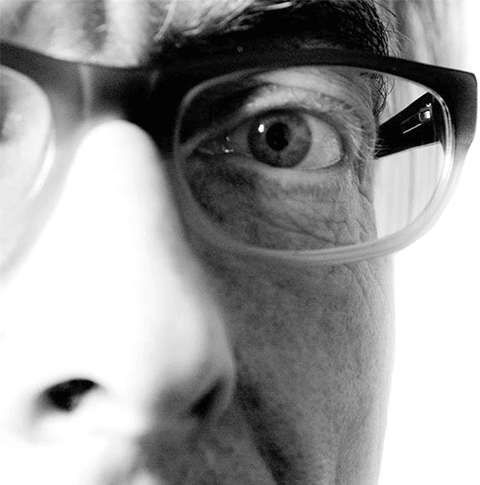Work with Heiner Holtappels
1975-1984
Unsatisfied with the traditional means of figurative expression we looked for new possibilities of expression. The question was: “In which form can we express ourselves in the best way and simultaneously remain as near as possible by ourselves and our living process.” We refused to express ourselves via the filter of usual media and looked for a direct presentation mode for emotional expression.
The form of the experimental research was our solution. In doing so the real action was the essential; video registration, photos, and films were primarily considered and used as pure documentation means.
We started our research in 1975 with the question: “What are the forces behind emotional expressions and how can we make them visible?” We supposed that an inversion of the course of an emotional process – starting with the expression of an emotion – must also disclose something about the forces that cause it. (Laughter, crying, trembling, beating – 1975 – Nr. I/2/3.) It appeared that dramatizing of emotional expression did no necessarily result in the perception of the associated emotion. However, it resulted in the realization and reevaluation of the naturally experienced and reactive proceeding forms of sentimental expressions.
Our actions were developed in common starting from the idea up to the execution. Often the work was influenced by the different behavior between us which was beyond logical reasoning. Now we made this fact to the real subject. We turned to this aspect by analyzing the speech (form of speech – 1975 – Nr. 4), followed by analysis of bearing with the question: “What is the role of bearing in our communication process?” (Bearing talking, role talking – 1975 – Nr. 5/6.)
Methodically we took bearings that were loosened from the original context for a preliminarily fixed period. In doing so we talked about the feelings that were caused by these bearings. Thus we made the non-verbal messages to the subject of our verbal communication.
The completion of this communication series was the action “Siamese twins” (1975 – Nr. 7). We spent 8 hours in overalls that were sewed together at the chest. Thus the direction of the further development of our investigation was indicated: the examination of the psychic effects being caused to the body by external conditions. “Siamese twins” represents a compressed and symbolic form of our cooperation.
In the following we returned again to the individual experiments. Thereby the personal complex of problems of the own psyche was considered as to be the center. Whereas in all actions it was important to gain experiences instead of developing formal-aesthetic questions we now started a way of looking at problems that concerned us existentially. (Sinnesentzug – Körpersituation + Atmung – 1976 – Nr. 8-15). On the one hand we observed and treated ourselves as to be the object, on the other hand it was the intention to penetrate more deeply into our subjective world of experience and to express the prevailing feelings.
With our way of presentation, i. e. to express our feelings physically by means of extreme situations we saw a boundary point to forms of appearances of the psychiatry domain. We understood the extreme body bearings of “schizophrenic catatonics” as to be a direct expression of their subjective situation. We were fascinated to see that people could remain for such an extremely long time (often during hours) in suchlike expressive bearing thus expressing themselves directly without using any building means.
We then tried to approach this “world” physically by imitating the extreme bearings (Imitations 1 + 2 – 1977 – Nr. 16/17). However, we could not stand the chosen bearings for more than 4 minutes since otherwise our muscles cramped and began to tremble. Thus we learned something about the immense energy which enables “catatonics” to remain in such bearings for hours.
In contacts with psychiatrists and patients – inside and outside of mental hospitals – we tried to find an answer for the unknown, the mystery of this world of expression of “schizos” which seems to be such bizarre and exotic for outsiders. In the hospitals we did not find any exotic atmosphere, but rather a damped desolation caused by tranquilizers. The strong forms of expression had disappeared in the mental hospitals when calmative agents emerged. Our concentration towards scientific theories and the relevant explanation trials did not result in any satisfactory answer either to the question how to understand the “mental patient” and his world. It was not even our interest to see the kind of expression of mental patients as to be a creativity expression and to classify them with regard to artistic criteria such as “originality” and “richness of ideas”. We rather attached importance to the inner process that became manifest in these bearings.
Our work is the trial to get into contact with this “world” and during this examination also to get into contact with the secret world inside ourselves. Out of this world of expression we took different aspects which we transferred in distinct actions. The result was a series of actions and performances (Begrenzungen, Reminiszenz, Monotonie – 1977/78 Nr. 18-30) that integrated again this material out of a field of art into our form of self-awareness.
